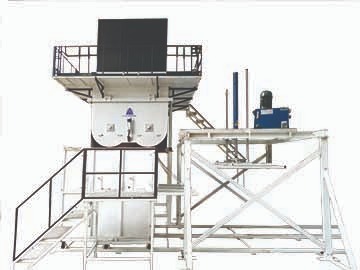Polyurethanes (PUs) are known to have a wide range of applications in our day-to-day products. Due to its high resiliency and flexibility, PU foam is used in mattresses and insoles of footwear for cushioning, automotive interiors such as elastomeric wheels and tires, electrical potting compounds, packaging, and carpet underlays. In fact, the use of Polyurethanes in construction materials enable architects to develop high-performance products that are strong and durable.
However, the wear and tear of these products tend to generate a huge amount of waste, thereby bringing about a negative impact on environmental sustainability. The most obvious solution to reduce the volume of waste generated from PU products is to recycle and recover the PUs. Based on the type of PU, you can use various recycling methods including reuse or particle bonding and grinding. A foam recycling machine offers the easiest and most convenient way of recycling and recovering PUs to form rebounded flexible foam and save the environment from degradation. It also saves the material costs. In other words, it can be said that bond recovery is the most preferred option for reusing PUs.
What is Re-bonded Foam?
When multiple densities of foam are broken down or shredded, re-bonded under tremendous mechanical pressure, and combined, new blocks of high density and flexible foam are formed. These are then cut into desired length and width for use in various products. Re-bonded foam has been in use for decades.
Process Involved in the Recovery of Foam
The first and foremost step in the recycling process is the collection and sorting of foam, followed by its shredding into smaller pieces. Foam pieces collected from manufacturing waste or post-consumer waste are suitable for use for the re-bonding process. A good quality shredding machine can effectively help in carrying out this part, thereby converting the foam into your desired granule sizes. These small pieces are collected into a blend tank and are coated with an adhesive polyurethane binder. A piston is used for compressing the foam and moulding it to the required density and shape. The introduction of steam in this mould further helps in activating and curing the adhesive binder. Once the curing is done, you can open the mould, remove the re-bond, and let it dry. The re-bond can then be converted into numerous end products by means of conventional cutting and peeling processes. Keeping in mind this entire process, the foam re-bonding machine is designed. It includes one mould, one shredding machine, one mixer, and one pressing station.
Factors Affecting the Quality of the Re-bonded Foam
The quality of all re-bond foams is not the same. It depends on several factors such as the quality of the adhesive binder used, the size of the foam particles and uniformity of the shredded pieces, the types and grades of foams used, the density desired in the product, and the binder / foam ratio.
Save Money, Save Environment
As stated earlier, the re-bonding of PU foam helps to reduce the amount of waste and conserve the natural resources. In addition to that, the process helps to save a great deal of manufacturing costs. Hence, the recycling and recovery of PU foams help in attaining both environmental and economic sustainability.

